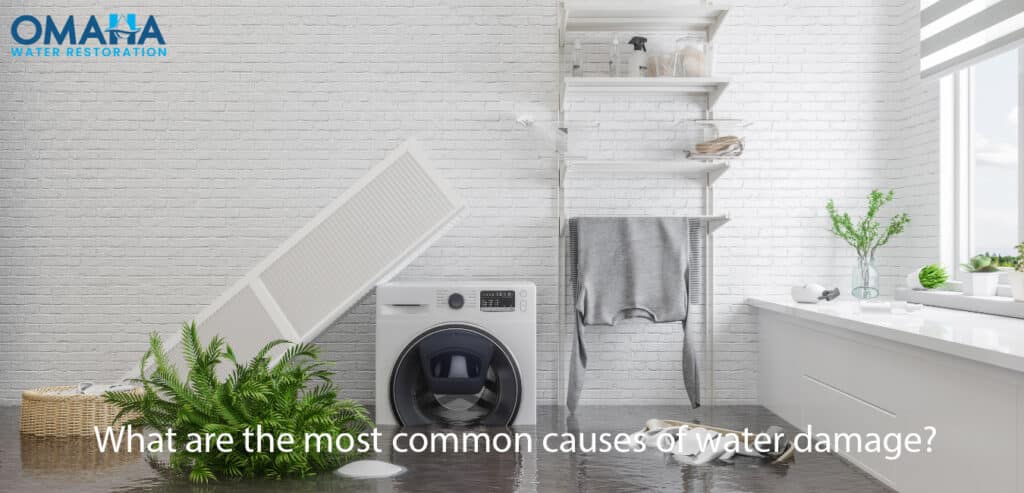
Water damage can cause significant issues for homes and businesses, often resulting in expensive repairs and potential health risks. Understanding the causes, signs, and preventive measures is imperative to protect your property effectively. This article will examine the common causes of water damage, ranging from weather-related events to plumbing failures and even human error. It will also identify the warning signs that suggest water-related problems and provide practical tips to help safeguard your space from unwanted water intrusion. Staying informed and prepared is key to preventing water damage through proper water mitigation strategies. For residents in the Omaha area, Omaha Water Restoration offers expert services to address water damage promptly and effectively, ensuring your property is restored to its original condition.
What are the Common Causes of Water Damage?
Gaining a clear understanding of the primary causes of water damage is essential for homeowners and businesses to implement effective prevention strategies.
Water damage can originate from various sources, including leaking pipes, burst pipes, malfunctioning appliances, and natural disasters like heavy rainfall or flooding. Additionally, water intrusion risks can arise from poor ventilation and clogged gutters.
In Omaha, the risk is further heightened by freezing temperatures, which can lead to burst pipes. Therefore, property owners need to remain vigilant and proactive in addressing these potential issues.
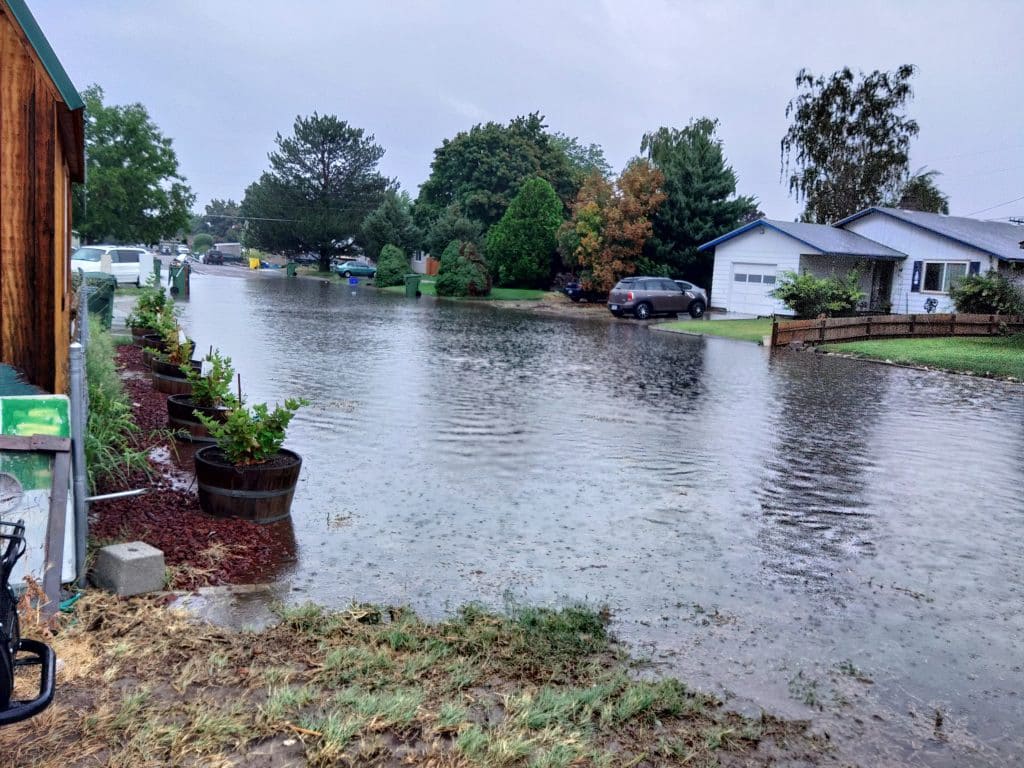
Weather-related Causes
Weather-related causes of water damage pose a significant threat to homes and businesses, especially in areas that experience heavy rainfall and natural disasters. These extreme weather events can lead to flooding and overwhelming drainage systems, resulting in water overflow that seeps into structures and causes considerable damage. Homeowners in Omaha, NE, should exercise caution during storm seasons and actively monitor local weather events to mitigate potential risks.
Understanding the local climate is essential for any property owner. Along with heavy rainfall, weather-related factors, such as snowmelt, can contribute to water intrusion. Being aware of the typical weather patterns in your area is crucial, as these patterns significantly influence how vulnerable a property may be.
Regular inspections and preventative measures can significantly help in minimizing damage. For instance, ensuring gutters are cleared, and downspouts direct water away from foundations is vital to prevent foundation cracks and potential foundation repair.
- Conduct annual maintenance on roofs and drainage systems.
- Invest in sump pumps and waterproofing solutions.
- Keep an emergency kit ready for rapid response to flooding, including emergency shut-off tools and contact information for emergency services.
By taking these proactive steps, property owners can effectively safeguard their homes and businesses against the unpredictable nature of severe weather.
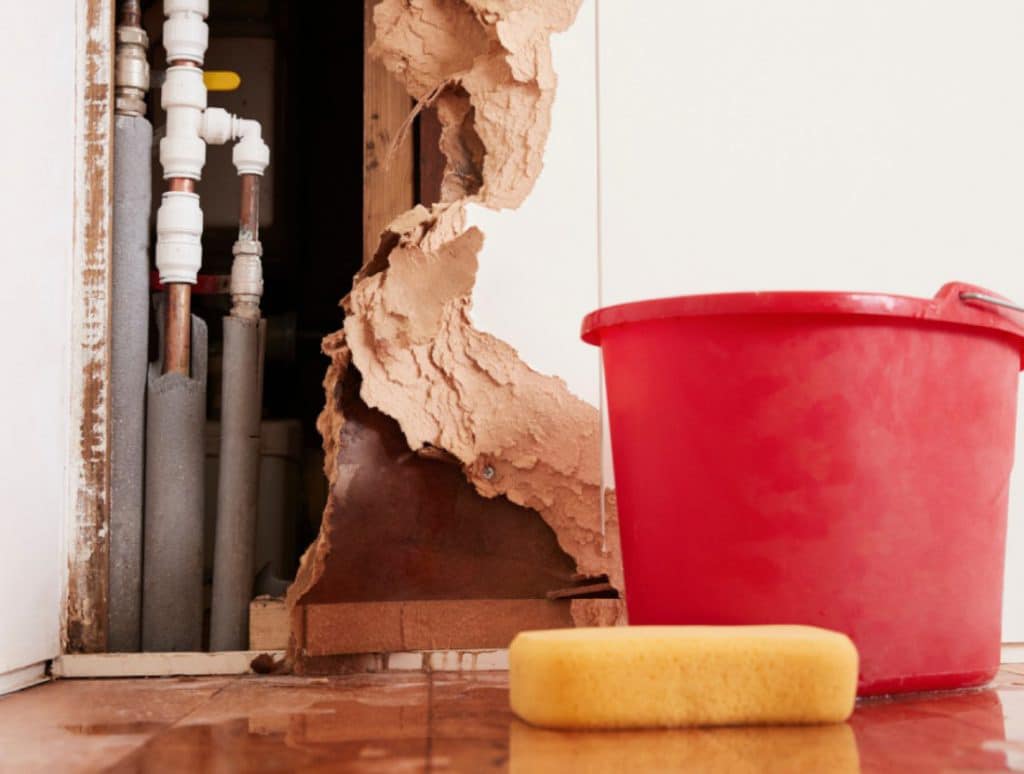
Plumbing Issues
Plumbing issues are among the primary causes of water damage, with leaking and burst pipes often resulting from wear and tear or inadequate installation. Routine maintenance and inspections can be instrumental in preventing plumbing leaks that could lead to expensive repairs and structural damage.
Homeowners should remain vigilant for the signs of malfunctioning plumbing, such as unexpected water overflow, and promptly address any problems before they escalate.
Understanding the common causes of these plumbing issues can significantly aid in taking proactive measures. For example, regular inspections can help identify:
- Corroded pipes that may be nearing failure.
- Faulty seals around fixtures that could allow water to seep through.
- Clogs that may increase pressure and lead to pipe bursts.
Homeowners should routinely inspect areas such as under sinks, around toilets, and near washing machines for damp spots or signs of moisture. Investing in preventive measures, like pipe insulation and routine maintenance, and ensuring that proper drainage systems are in place can save considerable hassle in the long run.
Ultimately, staying vigilant and maintaining your plumbing can significantly reduce the risks associated with water damage.
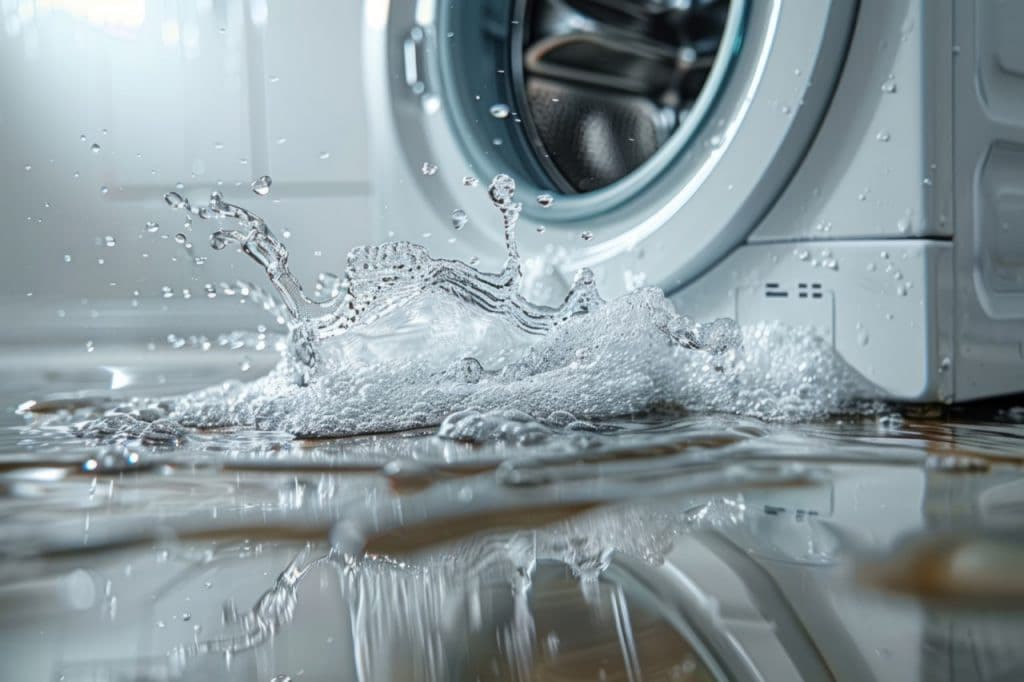
Appliance Malfunctions
Appliance malfunctions significantly contribute to water damage in both homes and businesses, often remaining undetected until considerable damage has already occurred. Appliances such as washing machines, dishwashers, and water heaters can develop leaks or overflow, resulting in moisture buildup that can lead to potential structural damage. By implementing a routine maintenance program and understanding your homeowner’s policy regarding appliance-related water damage, you can help mitigate these risks and reduce the need for potential home restoration.
As a homeowner, it is essential to remain vigilant about the condition of your appliances. Regularly inspecting hoses for signs of wear, ensuring that seals are intact, and clearing any debris from drains can reduce the likelihood of malfunctioning.
Here are some common signs to watch for:
- Unusual noises during operation
- Puddles forming around appliances
- Decreased performance, such as inefficient washing or drying
Recognizing these early warning signs can prevent costly repairs and extensive damage. Additionally, ensuring that you have the appropriate insurance coverage is crucial, as it can protect you against unexpected repair costs associated with appliance failures. Homeowners should familiarize themselves with the specifics of their policy regarding water damage to ensure they are adequately covered.
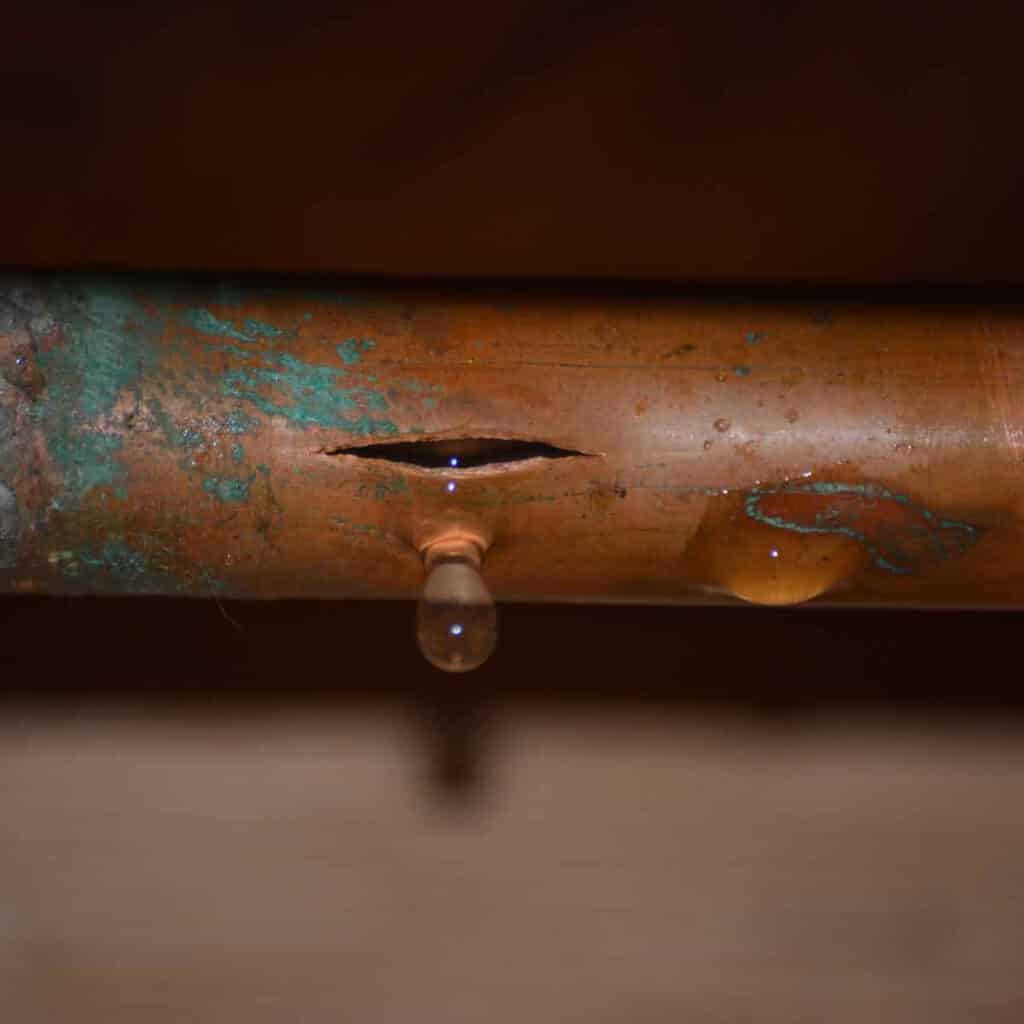
Leaking or Burst Pipes
Leaking or burst pipes present a significant risk for water damage, potentially leading to considerable water intrusion within a property. Understanding the multifaceted causes of these issues is essential for effective prevention. Factors such as freezing temperatures, high water pressure, corrosion, and poor water leak detection can lead to plumbing system failures, which may result in water overflow that damages walls, ceilings, and foundations. Recognizing these risks is crucial for homeowners to avoid extensive repairs.
Water damage from plumbing failures disrupts daily life and can impose substantial financial burdens. If left unchecked, leaks can promote mold growth and compromise the home’s structural integrity, creating dangerous situations. Homeowners can mitigate these risks by taking proactive measures.
- Regular plumbing inspections are vital, as they help identify potential weak points in the system.
- Insulating pipes in colder areas can effectively prevent freezing.
- Monitoring water pressure levels can help avert the strain that often leads to burst pipes.
By prioritizing the maintenance of their plumbing systems, homeowners can protect their properties from unforeseen damages and enjoy greater peace of mind.
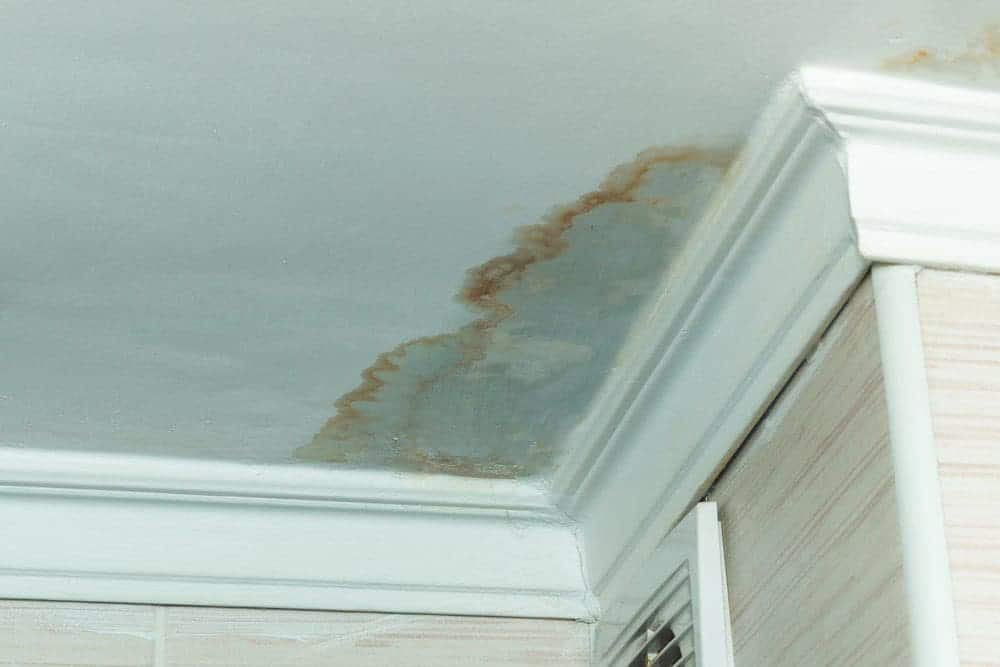
Clogged Gutters
Clogged gutters can result in significant water damage, as they impede proper drainage and lead to water overflow that may seep into buildings. When gutters are blocked, rainwater accumulates on roofs, which can cause leaks and damage to shingles, ultimately compromising the structural integrity of homes and businesses. Therefore, regular gutter maintenance is crucial for preventing these issues.
When left unattended, the consequences of clogged gutters can quickly escalate, leading to potential basement flooding and increased water intrusion risks. Water may pool in undesirable areas, leading to backups that seep into eaves, soffits, and even walls. This jeopardizes the roof and creates an ideal environment for mold, pests, and potential mold remediation efforts to thrive. The long-term risks extend to foundations, as excess water can erode soil and cause structural instability.
To keep gutters clear and functional, homeowners should adopt a proactive approach:
- Inspecting gutters and downspouts regularly for debris, especially during the fall and spring.
- Cleaning gutters at least twice a year or more frequently if nearby trees shed heavily.
- Considering the installation of gutter guards to minimize clogging.
- Hiring a professional service when debris is too high or when gutters show signs of damage.
By taking these steps, individuals can effectively mitigate risks, engage in backup prevention strategies, and protect their property from the adverse effects of water damage.
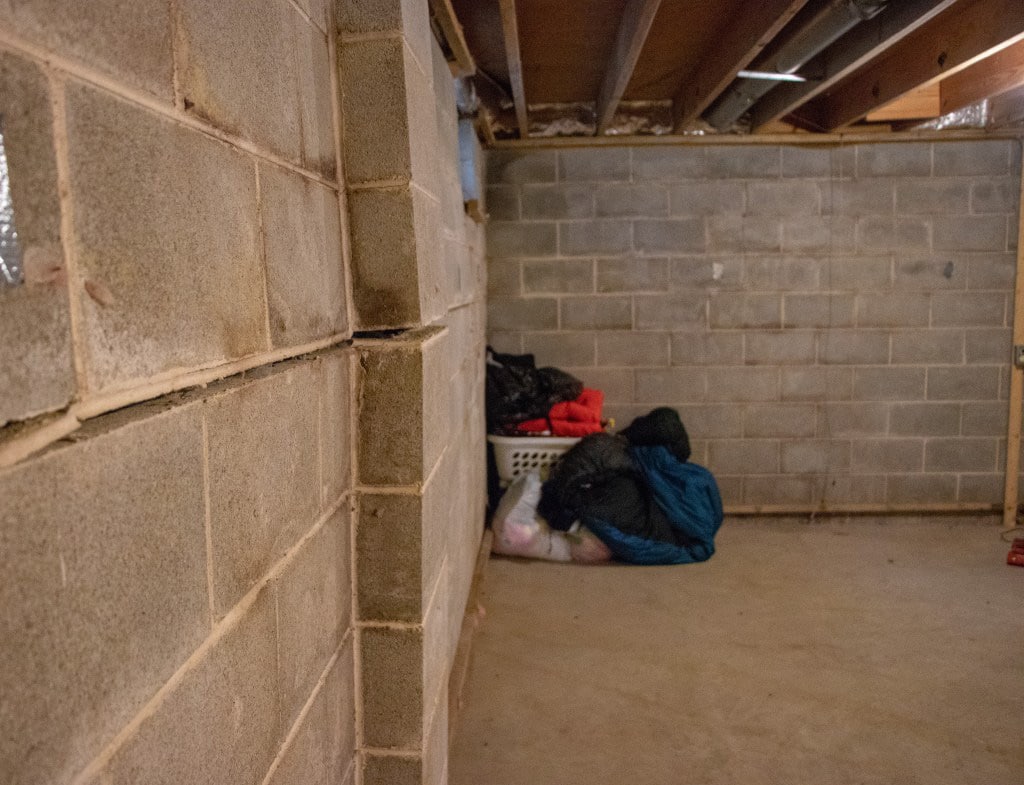
Foundation Issues
Foundation issues are a significant concern regarding water damage, as foundation cracks and inadequate drainage systems allow water to infiltrate basements and crawlspaces, necessitating potential foundation repair and involving services like United Structural Systems.
These vulnerabilities can lead to considerable problems over time, impacting not just the aesthetics of a home but also its structural integrity. Homeowners need to understand that proactive maintenance can prevent costly repairs in the future. Regular inspections facilitate the early detection of potential issues, ensuring that any necessary repairs can be addressed promptly. An effective drainage system is crucial for directing water away from the foundation, thereby reducing the risk of moisture intrusion.
Homeowners might consider the following measures:
- Implementing gutters and downspouts that efficiently channel rainwater away from the foundation.
- Investing in proper grading around the home to enhance drainage capabilities.
- During inspections, be vigilant for signs of dampness or mold, which could indicate a moisture problem.
By prioritizing these preventative measures, homeowners can significantly reduce the likelihood of water-related damage, safeguarding their properties for years.
Sewer Backup
Sewer backup is a concerning cause of water damage, particularly in low-lying areas or regions that experience heavy rainfall. Such incidents can lead to significant basement flooding, which results in structural damage and poses health risks due to contaminated water. Taking prompt action and engaging emergency services is essential to manage sewer backup situations effectively.
Homeowners should recognize that these backups can introduce harmful bacteria, viruses, and other pathogens, presenting considerable health hazards for residents. To mitigate these risks, it is wise to take necessary precautions, such as:
- Installing sump pumps
- Ensuring regular maintenance of sewer lines
- Being aware of the location of cleanouts
In case of a sewer backup, immediate actions should include:
- Turning off the electricity in the affected areas to avoid electrical hazards.
- Wear protective gear, such as gloves and masks, to prevent contact with contaminated water.
- Contacting professionals for assessment and clean-up, as they are trained to handle hazardous situations safely.
A contingency plan outlining the steps to take during such emergencies can significantly reduce panic and enhance recovery efforts.
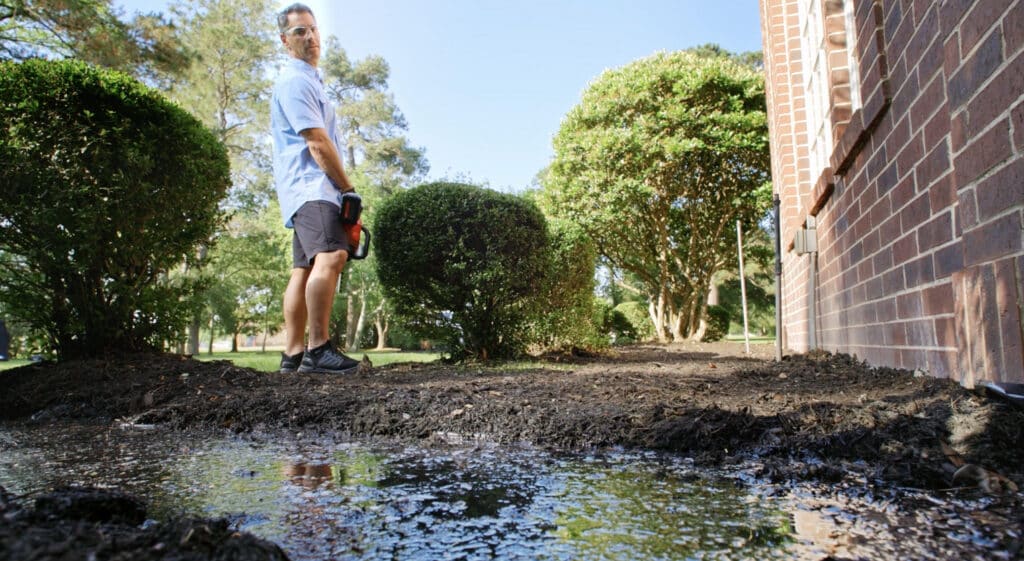
Poor Drainage
Poor drainage around a property can lead to significant water damage, particularly during heavy rainfall or snowmelt. When water cannot be effectively channeled away from the structure, it tends to pool near the foundations, resulting in erosion, foundation cracks, and moisture buildup in basements. This situation underscores the importance of having a well-designed drainage system to mitigate the risks associated with water intrusion.
Sustained water accumulation not only threatens the structural integrity of a building but can also create an environment conducive to mold growth, which poses health risks to the occupants. Homeowners should take a proactive approach by assessing their landscape for potential drainage issues. It is advisable to:
- Install gutters and downspouts that direct water five feet from the foundation.
- Grade the land around the property to slope away from the house.
- Utilize permeable paving materials to enhance water absorption.
- Consider the installation of French drains or other drainage solutions to manage excess water effectively.
By implementing these measures, homeowners can significantly improve drainage and protect their property from the adverse effects of inadequate water management.
Human Error
Human error is often an unexpected contributor to water damage, manifesting through actions such as neglecting to turn off appliances or failing to monitor tank water levels. Simple oversights, like forgetting to address appliance leaks or not following a maintenance schedule, can lead to severe damage and costly repairs. Homeowners must understand their responsibilities to minimize these risks.
Take, for instance, the typical oversight of leaving the washing machine unattended. An unexpected hose burst can result in extensive flooding that escalates rapidly, leading to significant structural damage and mold growth.
Developing a systematic approach is essential to reduce the likelihood of such incidents. Here are a few tips that can help:
- Create a checklist for regular inspections of appliances and plumbing systems.
- Set reminders on your phone or calendar to keep up with routine maintenance.
- Alerts should be placed to check water levels in tanks and other containers.
By incorporating these simple yet effective measures, homeowners can significantly lower the risk of water damage caused by human error.
What are the Signs of Water Damage?
Recognizing the signs of water damage is essential for timely intervention and reducing potential harm to both homes and businesses.
Common indicators of water damage include:
- visible mold growth
- discoloration or stains on walls and ceilings
- peeling paint or wallpaper
- warping or buckling of floors
It’s important for homeowners in Omaha to stay alert to these signs in order to prevent extensive structural damage and avoid incurring costly repairs.
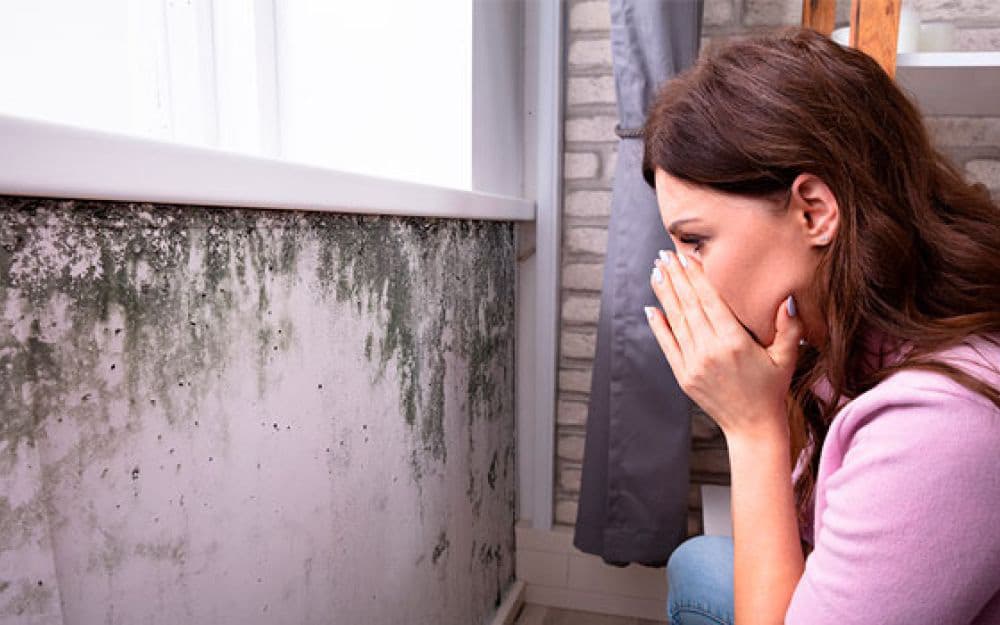
Musty Odor
A musty odor is often one of the first indications of water damage, signaling potential mold growth and moisture issues within a property. This unpleasant smell tends to be particularly noticeable in damp or humid areas, such as basements, where water intrusion may have occurred. It is essential for homeowners to promptly investigate any musty odors and follow inspection tips to identify the underlying cause of the problem.
Neglecting this warning could lead to significant health risks, as mold thrives in hidden, moist environments and can trigger allergies or respiratory issues for those living in the home. To effectively address this concerning indicator, homeowners should consider the following steps:
- Inspect hidden areas, such as behind furniture, under carpets, and within wall cavities, to safely identify the source of the moisture.
- Utilize a moisture meter to measure dampness levels in walls and floors, which may help reveal hidden leaks.
- Ensure adequate ventilation in rooms prone to humidity to prevent ongoing moisture accumulation.
If mold is visibly present, using protective gear while cleaning is essential to minimize exposure. For extensive mold issues, professional assistance is advisable, as experts can assess the situation comprehensively and provide targeted solutions.
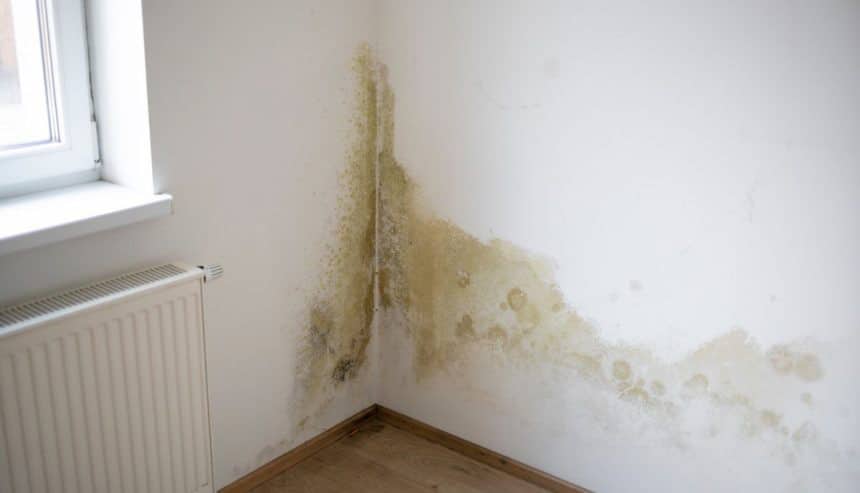
Discoloration or Stains
Discoloration or stains on walls and ceilings are clear water damage indicators, often resulting from ceiling leaks or moisture buildup behind surfaces. Identifying these stains early can assist homeowners in addressing issues before they escalate into more serious problems, such as mold growth or structural damage. Conducting regular property inspections can help in detecting these signs at an early stage.
When observing discoloration, it’s crucial to consider the color and texture; yellowish or brown patches may indicate prolonged water exposure, while darker stains could suggest more severe leaks. Homeowners should also pay close attention to areas near plumbing fixtures, windows, and roofs where water intrusion is more likely to occur. If these signs are present, it is advisable to take immediate action:
- Document the stains with photographs for future reference.
- Check for musty odors, which may signal the presence of mold.
- Investigate the source of the moisture if accessible, or enlist a professional for a thorough inspection.
Homeowners can promptly address the issue and prevent further damage and potentially costly repairs.
Peeling Paint or Wallpaper
Peeling paint or wallpaper is a clear indicator of water damage, suggesting that moisture has infiltrated the walls and could severely compromise their integrity. This issue may stem from roof leaks, plumbing leaks, or even elevated humidity levels, highlighting the urgency for immediate attention to prevent further damage. Homeowners should familiarize themselves with their policies regarding water damage repairs.
Understanding the underlying causes of these signs is essential. Often, moisture can originate from:
- Roof leaks, where damaged shingles permit rainwater to seep through
- Faulty plumbing, particularly in older homes where pipes may be deteriorating
- The effects of humidity, especially in areas that experience high moisture content in the air
Taking prompt action protects the home’s structure and reduces the risk of mold growth, which can develop in as little as 24 to 48 hours. For those navigating the intricacies of insurance claims, it is essential to document all damage meticulously. This includes:
- Photographs of affected areas
- Before-and-after images after repairs are completed
- Any correspondence with contractors or insurance adjusters
This readily available information can significantly streamline the process, ensuring homeowners, including Seattle homeowners, receive the necessary support for effective remediation.
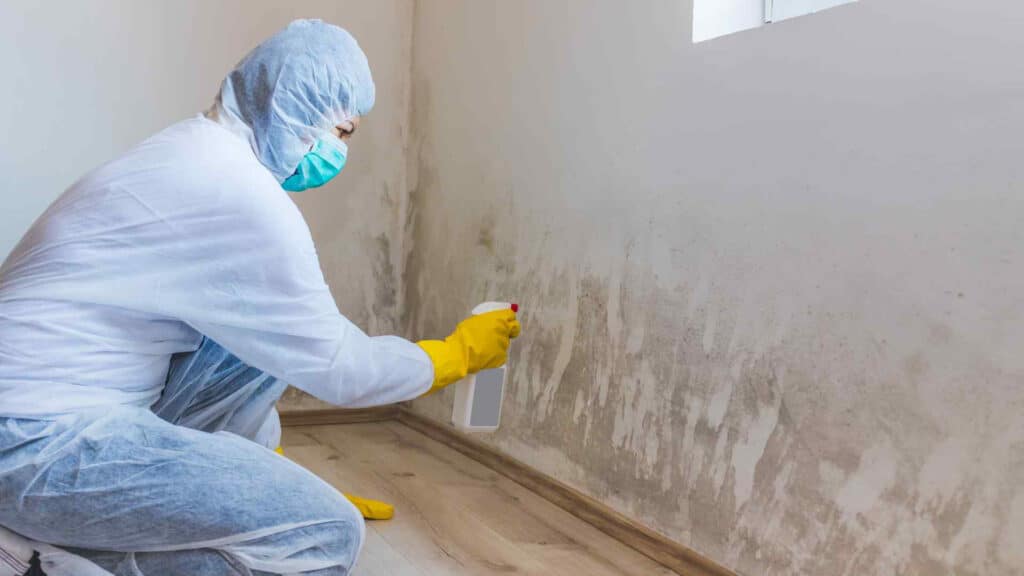
Mold Growth and Structural Damage
Mold growth is a significant consequence of water damage, especially in humid environments with excessive moisture and inadequate ventilation. It poses serious health risks and can lead to further structural damage if not addressed promptly. Homeowners should be vigilant in monitoring for mold, particularly in humid conditions, and may want to consider professional mold remediation services if mold is discovered.
Mold spores can quickly spread through the air, and inhaling them can result in respiratory issues, allergic reactions, and other health complications. Therefore, homeowners must take a proactive approach. Simple preventative measures include:
- Ensuring proper ventilation in attics, basements, and crawl spaces.
- Promptly fixing leaks to minimize moisture accumulation.
- Utilizing dehumidifiers in areas with high humidity.
Awareness of early signs of mold, such as a musty odor, discolored patches, or increased allergy symptoms, can prompt timely action. If these indicators arise, seeking professional assistance for mold remediation is essential to ensure effective treatment and safeguard the household’s health.
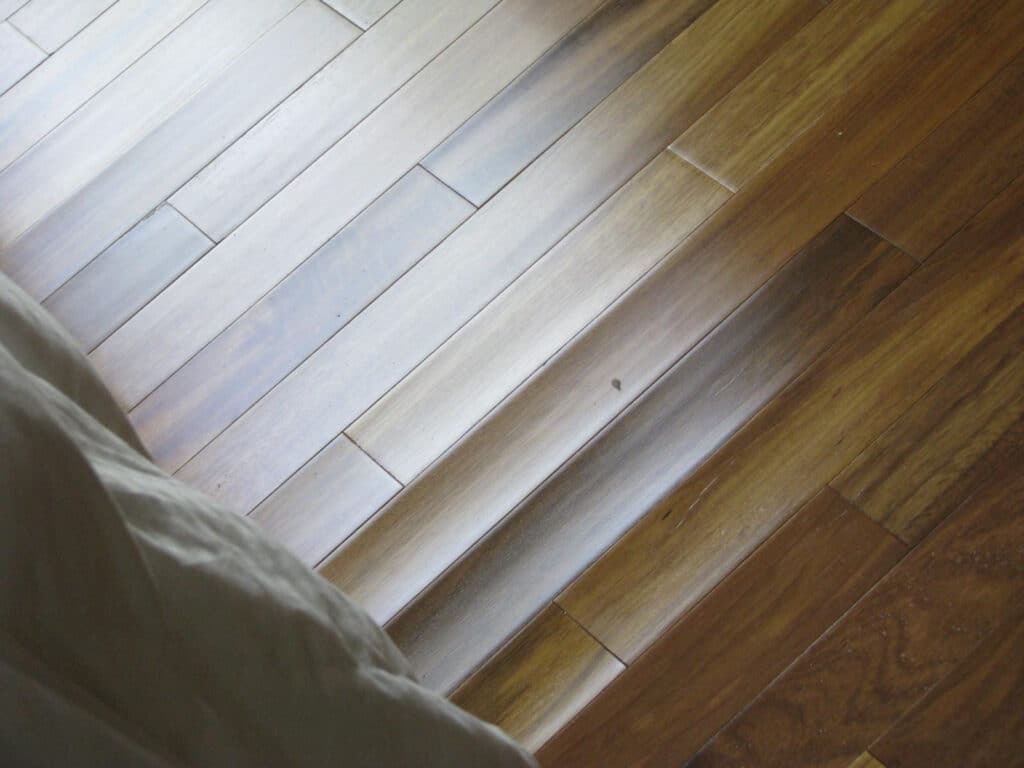
Warping or Buckling of Floors or Walls
Warping or buckling of floors or walls is a significant indicator of water damage, signaling notable moisture intrusion that, if not addressed promptly, can lead to serious structural issues, including potential foundation repair needs.
This type of distortion typically results from prolonged exposure to water, whether due to flooding or leaks and may necessitate extensive repairs to restore the building’s integrity. Homeowners must act swiftly to assess the situation and, if necessary, engage emergency services.
Identifying these problems early is vital, as warping and buckling can escalate rapidly, potentially resulting in more costly repairs if left untreated. In some instances, these issues may compromise the safety of the property, increasing the risk of mold growth and negatively impacting indoor air quality. Furthermore, compromised structures can become unstable, posing hazards to occupants.
Homeowners are advised to conduct regular inspections for signs of water damage, such as discoloration, mold, unusual warping, clogged gutters, and roof leaks. Should any of these indicators be present, consulting with professionals can help determine the best course of action to protect the home and ensure its long-term safety.
Increased Water Bill
An increased water bill can often serve as a subtle indicator of underlying water damage, potentially caused by plumbing leaks, corrosion pipes, or other issues. Homeowners should pay close attention to their water usage and investigate any unexplained spikes in their billing. These fluctuations may signify hidden leaks or inefficient appliances that require immediate attention. Regular property inspections can play a vital role in catching these issues early.
To effectively monitor water usage, homeowners can adopt several strategies. Keeping a close eye on monthly water bills is essential, especially when comparing trends over the past few months. It may be time to investigate further if a sudden increase is noticed.
- Promptly checking for drips or leaks in the home’s visible and hidden areas can help prevent further damage.
- Utilizing a water meter can provide insights into daily consumption, assisting homeowners in identifying irregular patterns.
- It may be beneficial to schedule annual plumbing inspections with professionals who can detect potential issues that are not immediately visible.
Taking these proactive measures not only saves money but also protects property value. Timely inspections enable homeowners to address any identified plumbing issues before they escalate into costly repairs, thereby preserving the integrity of their homes.
How to Prevent Water Damage?
Preventing water damage is crucial for maintaining the integrity of both homes and businesses, and it often starts with proactive measures like routine maintenance and inspections. Regular checks can help mitigate issues caused by heavy rain, appliance malfunctions, and other natural disasters.
Homeowners should regularly inspect for plumbing leaks, ensure adequate ventilation, and keep their gutter systems in good condition to prevent moisture buildup and potential structural damage.
Additionally, understanding one’s homeowner policy can offer valuable insights into coverage for preventive measures and repair costs.
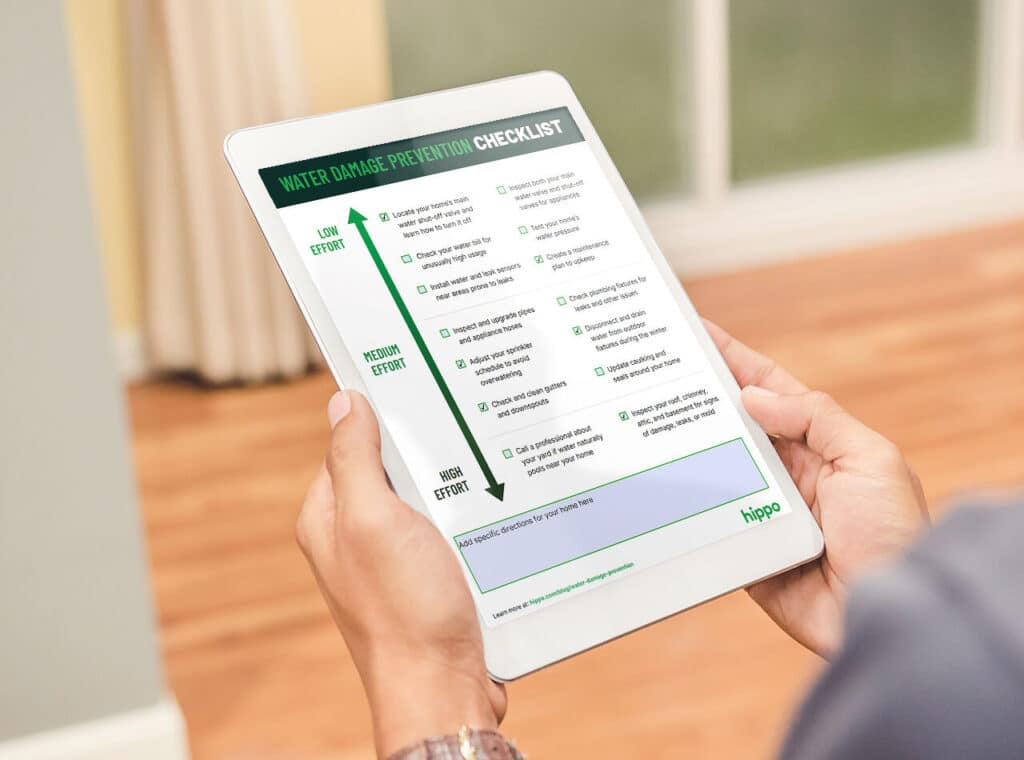
Regular Maintenance and Inspections
Regular maintenance and inspections are essential to any effective strategy to prevent water damage in homes and businesses.
By routinely checking for plumbing leaks, inspecting appliances, and ensuring that drainage systems function correctly, homeowners can significantly lower the risk of water intrusion and avoid the associated repair costs. Homeowners insurance can also provide coverage for unexpected damages.
Establishing a consistent maintenance schedule allows for addressing potential issues before they become more significant problems.
Moreover, scheduled inspections not only protect against unexpected expenses but also contribute to the overall longevity of the property itself. Here are some key practices to consider:
- Frequently check pipes for leaks, particularly in less visible areas such as basements or behind appliances.
- Regularly inspect gutters and downspouts to ensure they are debris-free, allowing for proper water flow.
- Monitor drainage systems and the grading around the home to prevent water pooling that could damage the foundation.
By integrating these practices into a comprehensive maintenance routine, homeowners can create a healthier living environment while safeguarding the value of their investment.
Properly Maintain Appliances and HVAC Systems
Properly maintaining appliances such as washing machines, dishwashers, and HVAC systems is essential for preventing water damage, as malfunctioning devices can often lead to leaks and overflow issues. Homeowners should make it a point to regularly inspect washing machines, dishwashers, and other water-using appliances for any signs of wear and ensure they are installed correctly to minimize the risk of water damage. Additionally, understanding the specifics of your homeowner’s policy can be pretty helpful when navigating repairs or replacements if an appliance fails.
To effectively safeguard against potential mishaps, it’s wise to adopt a few essential best practices:
- Conduct regular inspections: Periodically check hoses and connections for cracks or bulges.
- Promptly address repairs: If an appliance shows signs of malfunction, such as unusual noises or slow drainage, it’s essential not to delay getting it serviced.
- Keep appliance areas clean: Ensure there is no clutter around appliances, which can trap moisture and encourage mold growth.
By embracing these proactive measures, homeowners can not only extend the life of their appliances but also significantly reduce the likelihood of encountering damaging leaks and costly repairs in the future. Companies like United Structural Systems can assist with structural evaluations if needed.
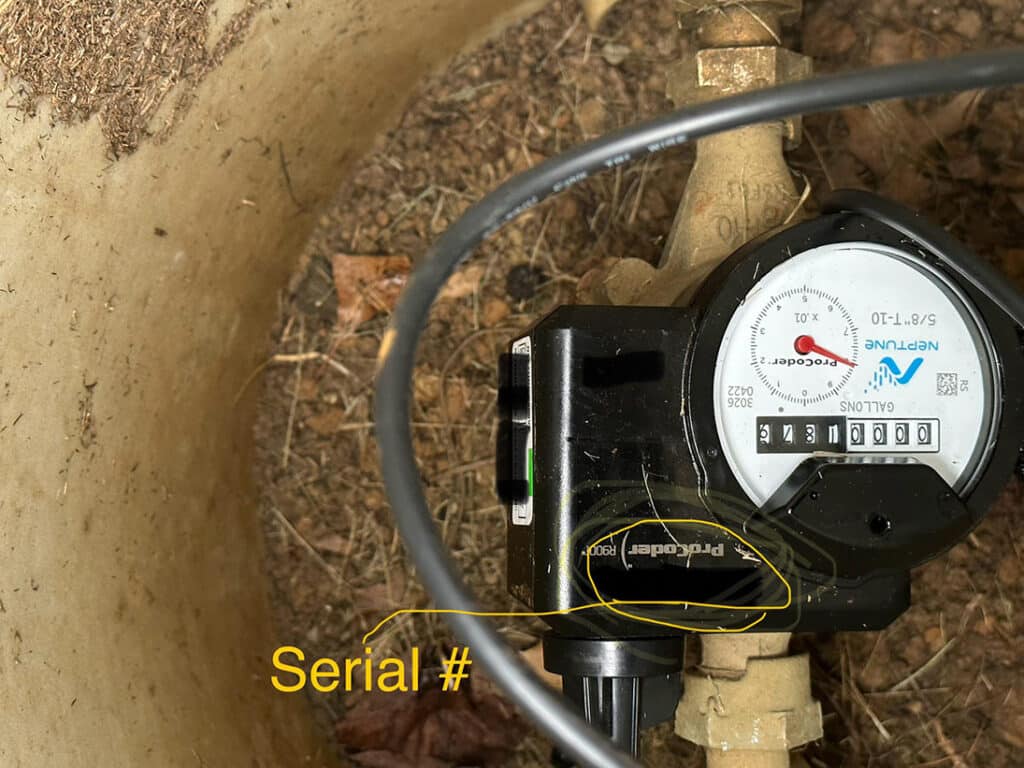
Monitor Water Usage
Monitoring water usage is essential for preventing water damage, as it enables homeowners to identify unusual patterns that may signal plumbing leaks, appliance inefficiencies, or clogged gutters. By carefully observing water bills and usage, individuals can catch potential issues early on, avoiding extensive damage and costly repairs. Regular checks give homeowners the power to take proactive measures before problems escalate. ServiceMaster, a renowned service provider, offers 24/7 assistance for emergencies.
Establishing effective monitoring habits can be accomplished with a few straightforward steps. For instance:
- Review your monthly water bill to identify any sudden spikes in usage, potentially hinting at leaking or burst pipes.
- Track your daily consumption by regularly reading your water meter.
- Look for inconsistencies over time, such as increased usage during specific months.
Utilizing smart home devices designed to monitor consumption can offer real-time feedback, alerting homeowners to any unusual usage patterns. This method helps save money and promotes a greater awareness of overall water conservation.
Stay informed about water usage patterns can lead to timely interventions, ensuring minor leaks do not develop into major repair issues.
Fix Plumbing Issues Promptly
Addressing plumbing issues promptly is essential in preventing water damage, as even minor leaks can escalate into significant problems over time, including those caused by bursting pipes or sewer backups. Homeowners should be vigilant for signs of plumbing leaks or roof leaks and have an emergency shut-off plan ready to ensure they can tackle issues as soon as they arise. Taking swift action on plumbing matters can save homeowners from costly repairs and extensive water damage.
It’s essential to recognize that early detection can make a substantial difference. Common indicators of plumbing leaks include water stains on ceilings, walls, or floors, an unexplained increase in the water bill, and dampness around fixtures or appliances.
To effectively manage plumbing concerns, homeowners should implement a straightforward yet effective emergency shut-off plan:
- Identify the location of the main water shut-off valve.
- Ensure that all family members know how to operate it.
- Regularly inspect plumbing fixtures and pipes for signs of wear and tear and ensure the gutter system is functioning correctly.
By taking these proactive steps, homeowners and businesses not only protect their property but also gain peace of mind, knowing that immediate action can prevent further complications from water damage. In a world where leaking pipes, roof leaks, and natural disasters can lead to mold growth and structural damage, being proactive is truly the key.
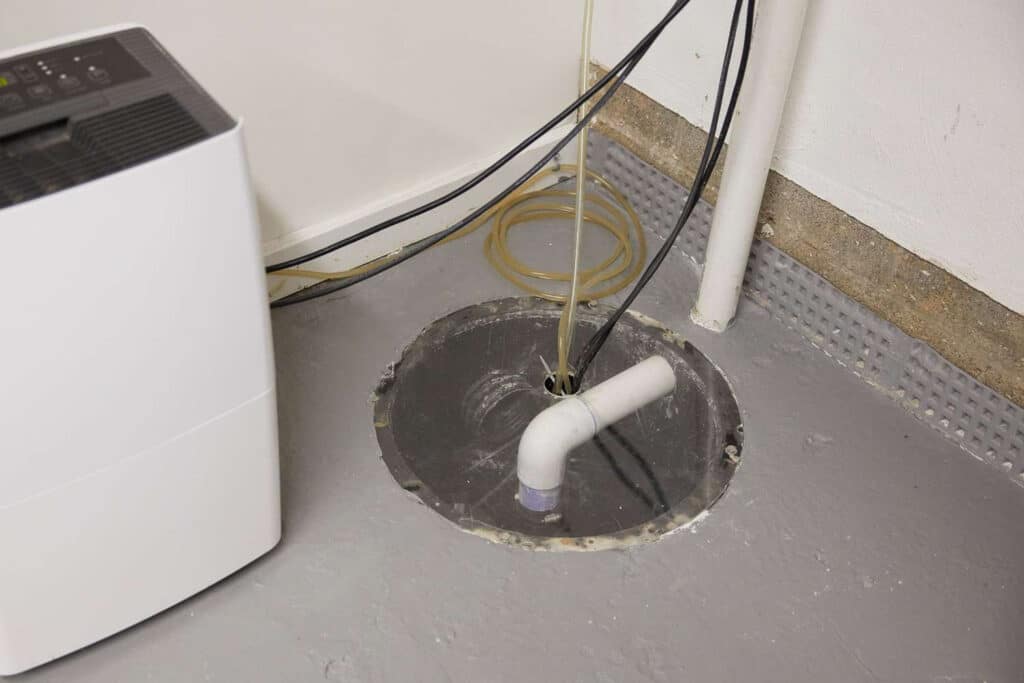
Install a Sump Pump
Installing a sump pump can effectively prevent water damage, particularly in areas susceptible to basement flooding. A sump pump works by managing excess water, directing it away from the foundation, and significantly reducing the risk of water intrusion. Seattle homeowners, faced with heavy rainfall, can substantially benefit from having a reliable sump pump as part of their gutter system and drainage strategy.
By keeping basements dry, the sump pump plays a crucial role in maintaining the home’s overall health. Regular maintenance is essential for its longevity and includes checking the pump’s power supply and testing the float switch. Opting for professional installation, potentially with the help of ServiceMaster, can help ensure optimal performance.
In areas that are prone to flooding or have high moisture levels, the advantages of having a sump pump become even more evident:
- Protection from Structural Damage: Preventing water buildup can help avoid costly repairs.
- Mold Prevention: Dry environments inhibit the growth of mold and mildew.
- Enhanced Property Value: A well-functioning sump pump can improve the property’s marketability.
Ultimately, investing in a sump pump protects your property and provides peace of mind during heavy storms and natural disasters, safeguarding against water damage and enhancing the property’s value in markets such as Omaha and the surrounding areas.
